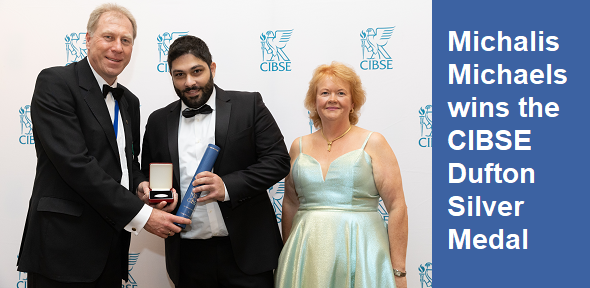
Submitted by Paula. Block on Tue, 21/11/2023 - 16:15
Congratulations to Cohort 4 Rep Michalis Michael who won the The Dufton Silver Medal awarded by The Chartered Institution of Building Services Engineers (CIBSE) for the research paper:
Closed Cavity Façade, an innovative energy saving façade.
https://doi.org/10.1177/01436244221080030
In its simplest form, a Closed Cavity Façade (CCF) consists of a double or triple glazing unit (DGU or TGU) on the inner layer and single glazing on the outer one, forming a sealed non-ventilated cavity with an automated shading device in between. Given its dynamic behaviour, this technology can dynamically control the flow of solar energy and light penetrating the building. Several CCF configurations were modelled in EnergyPlus and IDA ICE and compared to the baseline (TGU). MATELab, an office-like test facility at the University of Cambridge, was used as the model, which was beforehand experimentally validated. The results show extensive benefits of CCFs compared to traditional TGU systems regarding thermal performance and occupants' comfort. The CCF configurations investigated led to an improvement of energy performance in the range of 18–37% compared to the traditional TGU, depending on the CCF configuration and the climate. Further investigation showed that glass coatings and solar shading characteristics are vital in reducing overheating while increasing occupants' comfort.
Practical application: Governments are making ever more stringent energy regulations for the building industry, aiming to reduce energy consumption and carbon emissions. At the same time, building owners and architects are looking at cost-effective solutions for the long-term performance of buildings, while tenants are more than ever aware that building comfort increases well-being and productivity. In all these regards, this work demonstrates that substantial improvements can be achieved by designing and using suitable configurations of the innovative Closed Cavity Façade according to the climatic conditions of each location. The results presented indicate that there is much potential in improving the energy and comfort performance of a building, raising awareness to help deploy innovative glazing technologies.

